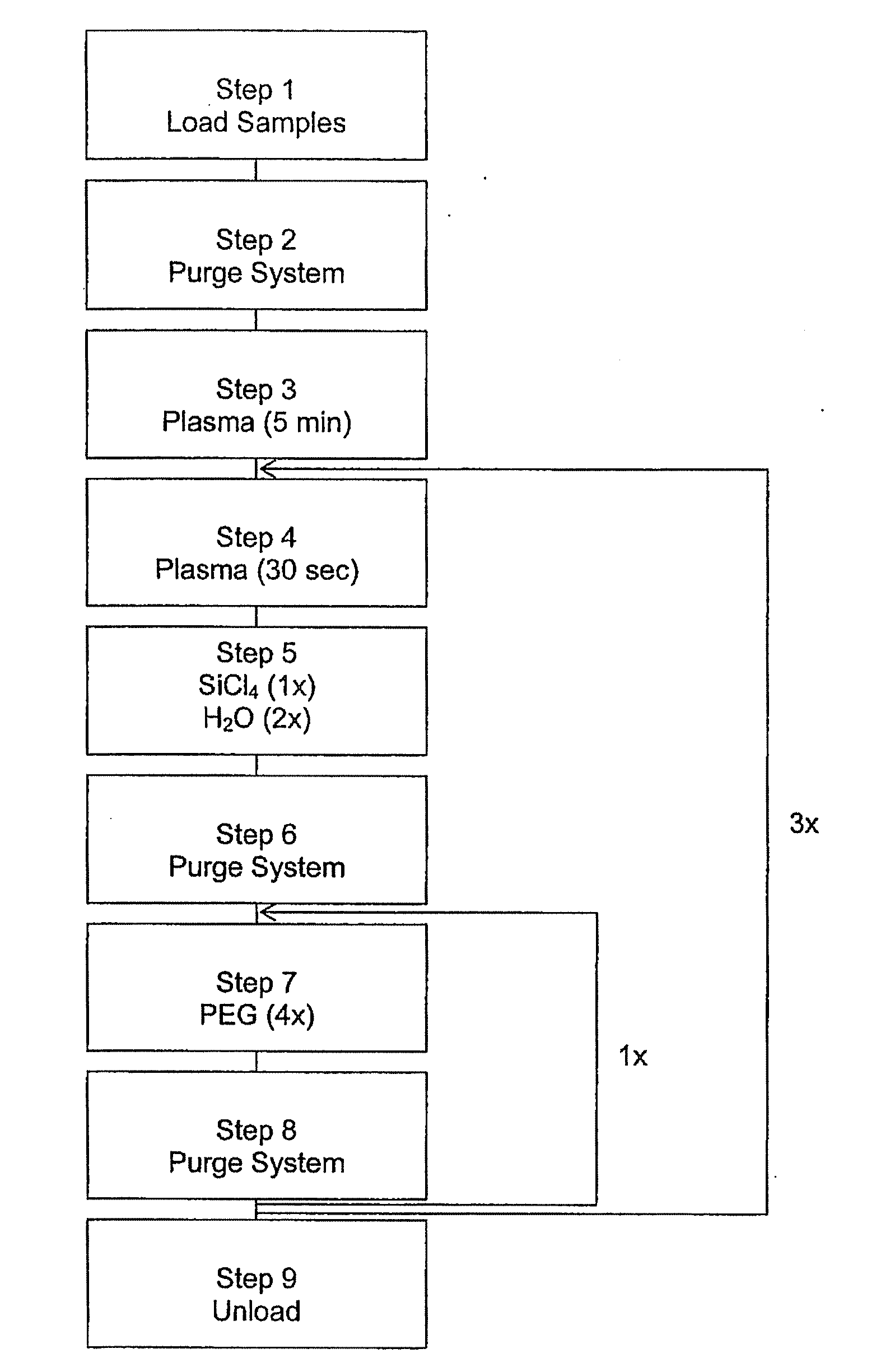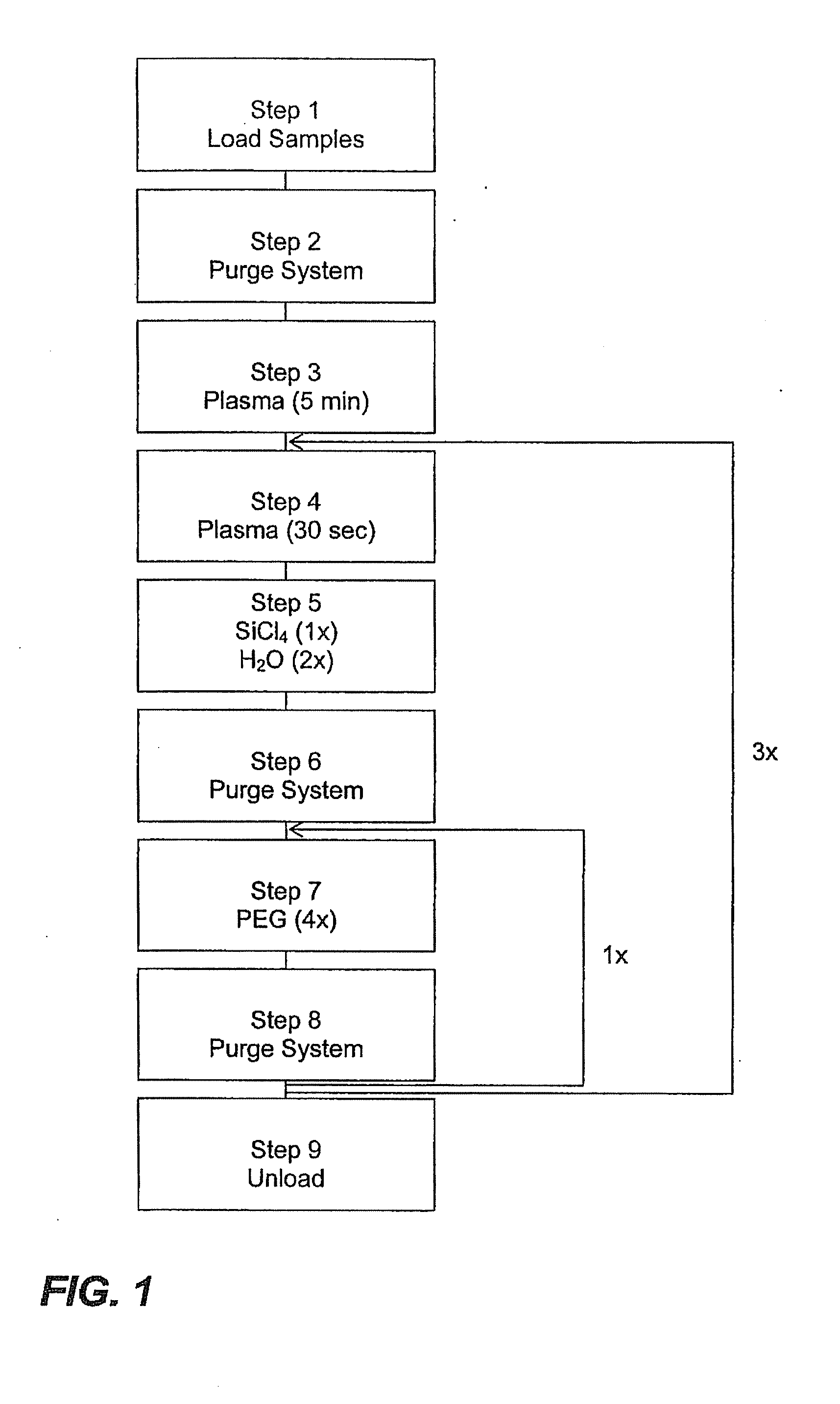Lens surface enhancement
a technology of lens and surface, applied in the field of intraocular lens coating composition, can solve the problems of corneal damage, scarring or abrasion, edema, and edema, and achieve the effects of reducing the risk of lens damage, and reducing the tackiness of the lens
- Summary
- Abstract
- Description
- Claims
- Application Information
AI Technical Summary
Benefits of technology
Problems solved by technology
Method used
Image
Examples
example 1
PEG Surface Treatment Procedure
[0031]Intraocular lenses suitable for coating with the PEG surface treatment of the present invention include IOLs made from acrylic polymer substrates and IOLs made of other suitable materials as are known by persons skilled in the art.
[0032]Substrates for PEG surface treatment included intraocular lenses and discs having dimensions of approximately 16.0 mm×1.0 mm. The PEG surface treatment was applied with a MVD 100 Molecular Vapor Deposition (MVD™) apparatus developed by Applied Microstructures Inc. (San Jose, Calif.). An illustrative example of the PEG treatment conditions are given in FIG. 1. Experimental conditions can be adjusted to increase or decrease the deposition of PEG.
[0033]A description of each of the process steps is given below.
[0034]Step 1: Samples are loaded onto stainless steel trays to secure the IOLs such that both of the optic surfaces are exposed to the PEG treatment. Each tray is capable of holding approximately 180 IOLs. The f...
PUM
| Property | Measurement | Unit |
|---|---|---|
| sizes | aaaaa | aaaaa |
| size | aaaaa | aaaaa |
| time | aaaaa | aaaaa |
Abstract
Description
Claims
Application Information
 Login to View More
Login to View More - R&D
- Intellectual Property
- Life Sciences
- Materials
- Tech Scout
- Unparalleled Data Quality
- Higher Quality Content
- 60% Fewer Hallucinations
Browse by: Latest US Patents, China's latest patents, Technical Efficacy Thesaurus, Application Domain, Technology Topic, Popular Technical Reports.
© 2025 PatSnap. All rights reserved.Legal|Privacy policy|Modern Slavery Act Transparency Statement|Sitemap|About US| Contact US: help@patsnap.com



